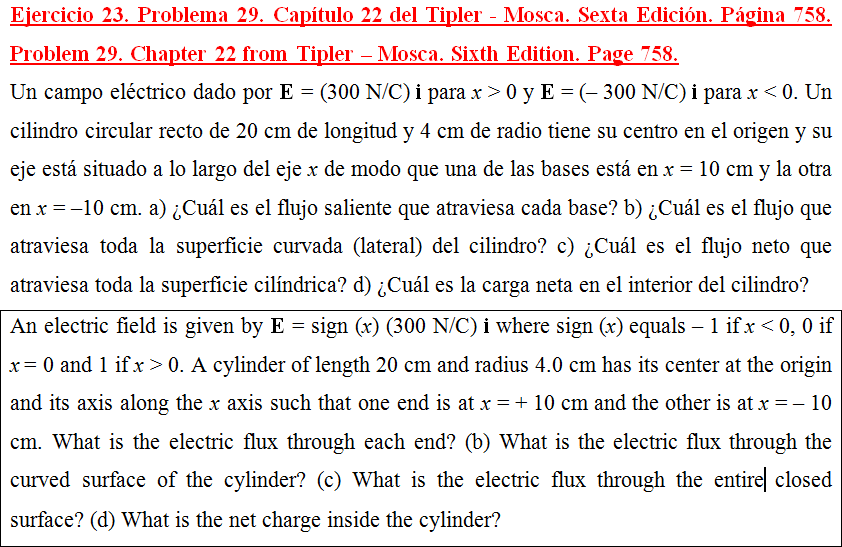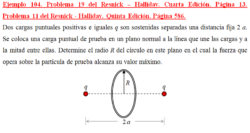Descripción
Problema 29. Capítulo 22 del Tipler – Mosca. Sexta Edición. Página 758.
Problem 29. Chapter 22 from Tipler – Mosca. Sixth Edition. Page 758.
Un campo eléctrico dado por E = (300 N/C) i para x > 0 y E = (– 300 N/C) i para x < 0. Un cilindro circular recto de 20 cm de longitud y 4 cm de radio tiene su centro en el origen y su eje está situado a lo largo del eje x de modo que una de las bases está en x = 10 cm y la otra en x = –10 cm. a) ¿Cuál es el flujo saliente que atraviesa cada base? b) ¿Cuál es el flujo que atraviesa toda la superficie curvada (lateral) del cilindro? c) ¿Cuál es el flujo neto que atraviesa toda la superficie cilíndrica? d) ¿Cuál es la carga neta en el interior del cilindro?
An electric field is given by E = sign (x) (300 N/C) i where sign (x) equals – 1 if x < 0, 0 if x = 0 and 1 if x > 0. A cylinder of length 20 cm and radius 4.0 cm has its center at the origin and its axis along the x axis such that one end is at x = + 10 cm and the other is at x = – 10 cm. What is the electric flux through each end? (b) What is the electric flux through the curved surface of the cylinder? (c) What is the electric flux through the entire closed surface? (d) What is the net charge inside the cylinder?



Valoraciones
No hay valoraciones aún.